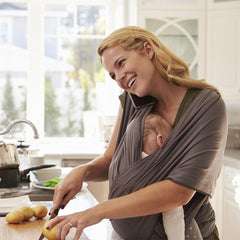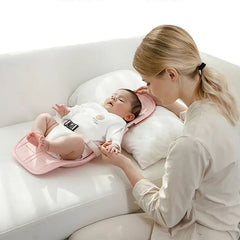Signs Your Baby is Ready to Transition to a Crib
Introduction
Hey there, new parents! Are you wondering if it’s time for your little one to move from co-sleeping to crib sleeping? Transitioning your baby to a crib is a significant milestone, and it can come with a mix of excitement and anxiety. Knowing the signs that your baby is ready for this change can make the process smoother for both of you. Let’s dive into the indicators that it might be the right time to transition and how to make the switch as seamless as possible.
Why Transitioning to a Crib is Important

Transitioning your baby to a crib can promote better sleep habits, safety, and independence. Crib sleeping reduces the risk of Sudden Infant Death Syndrome (SIDS) and gives parents their own space to rest. Plus, it helps your baby develop self-soothing skills that are crucial for long-term sleep health.
Signs Your Baby is Ready to Transition to a Crib
Outgrowing the Bassinet or Co-Sleeping Arrangement

As your baby grows, they need more space to move around. If they’re starting to look cramped or uncomfortable in their current sleeping arrangement, it might be time to consider a crib.
Rolling Over and Increased Mobility

Once your baby starts rolling over and showing increased mobility, it’s safer for them to sleep in a crib where there’s less risk of falling or getting stuck in a dangerous position.
Sleeping for Longer Stretches at Night

If your baby is sleeping for longer periods without waking up, they might be ready for the crib. This indicates that they are developing a more mature sleep pattern that can adapt well to the crib environment.
Showing Signs of Independence

Babies who can fall asleep on their own without much intervention from parents are often ready for the crib. This independence is a great sign that they can handle the transition.
Increased Discomfort in Your Bed

If your baby seems restless or fidgety in your bed, it might be because they’re ready for more space and their own sleeping environment.
How to Make the Transition Smooth
Gradual Transition
Start with nap times in the crib before making the full switch at night. This gradual approach helps your baby get used to the new sleeping environment without a sudden change.
Special Tool: Newborn Baby Crib - This portable crib can be placed in different rooms, allowing your baby to nap comfortably and consistently as they get used to their new sleep space.
Create a Comfortable Sleep Environment
Ensure the crib is cozy and safe. Use a firm mattress and fitted sheet. Consider adding a white noise machine to mimic the soothing sounds your baby is used to.
Special Tool: Cotton Sleeping Bag - Keeps your baby warm without the need for loose blankets, which can be a safety hazard. Its soft material ensures comfort and a good night’s sleep.
Maintain a Consistent Bedtime Routine
Keep the same bedtime routine you’ve established, whether it’s a bath, a story, or a lullaby. Consistency helps your baby feel secure and ready for sleep.
Use Comfort Objects
Introduce a small, safe comfort object like a soft toy or blanket that can stay with your baby in the crib. This can provide a sense of security.
Special Tool: Baby Correction Head Shaping Pillow - Helps maintain proper head shape and provides support during sleep, making your baby more comfortable in their crib.
Pro Tips
Familiarize Your Baby with the Crib During Playtime

Let your baby spend some playtime in the crib during the day. This helps them associate the crib with positive experiences and makes the transition less daunting.
Use a Comfort Object

Introduce a small, safe comfort object like a soft toy or blanket that can stay with your baby in the crib. This can provide a sense of security.
Conclusion
Transitioning from co-sleeping to crib sleeping can be a smooth process when your baby shows the right signs and you approach it with patience. By watching for these signs and using the right tools, you can help your baby adapt to their new sleeping environment with ease. Remember, every baby is different, so go at your baby’s pace and enjoy this new stage of independence and growth. For more insights on baby sleep, check out our blog on 5 Common Baby Sleep Challenges and How to Overcome Them and Common Foods That Can Harm Your Baby's Teeth.





















